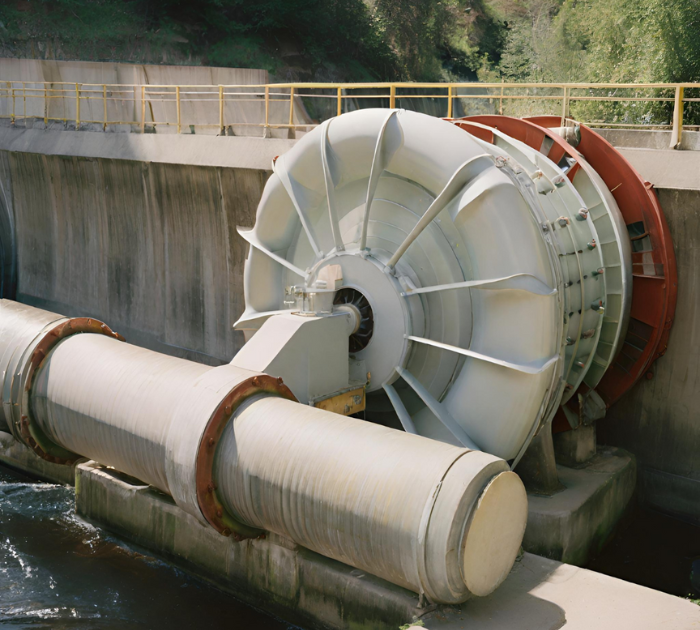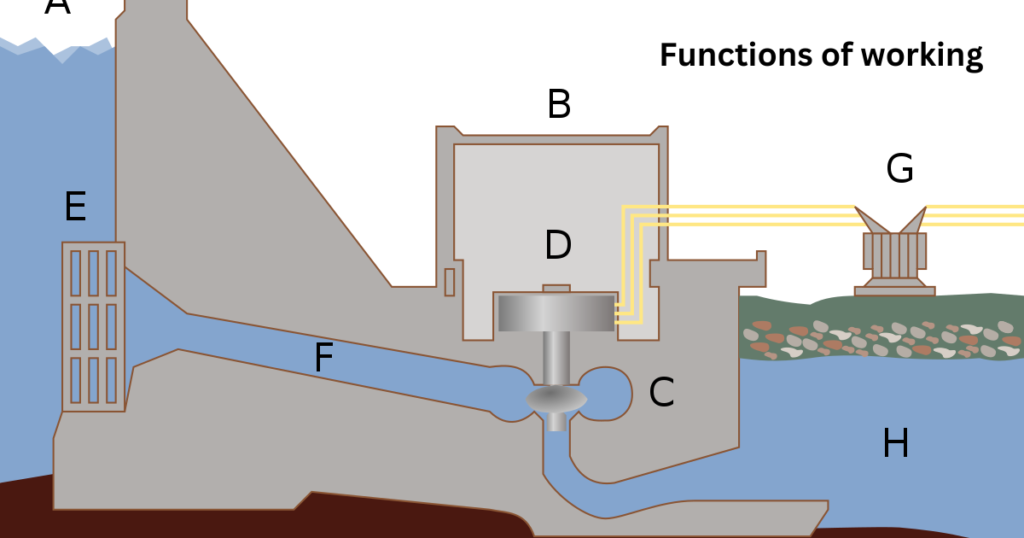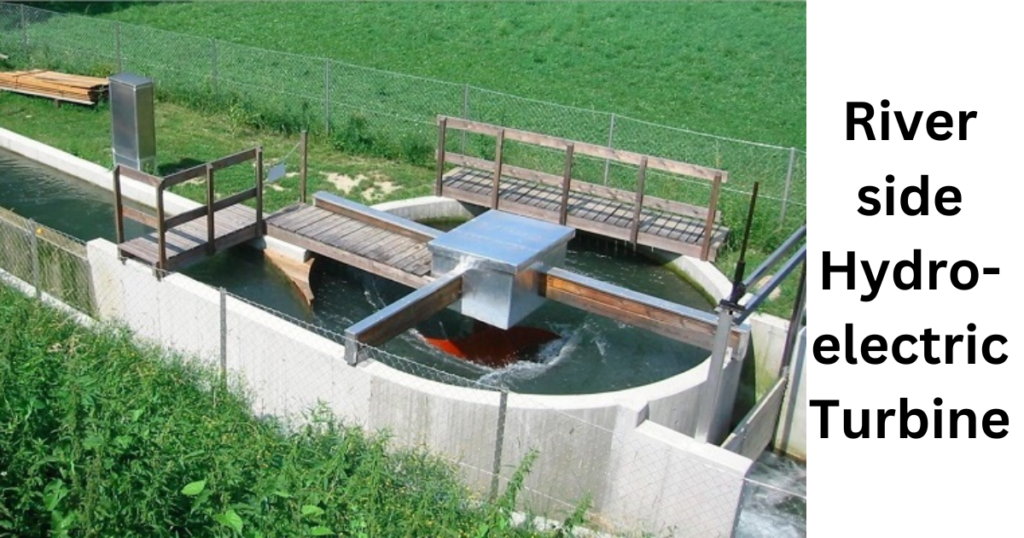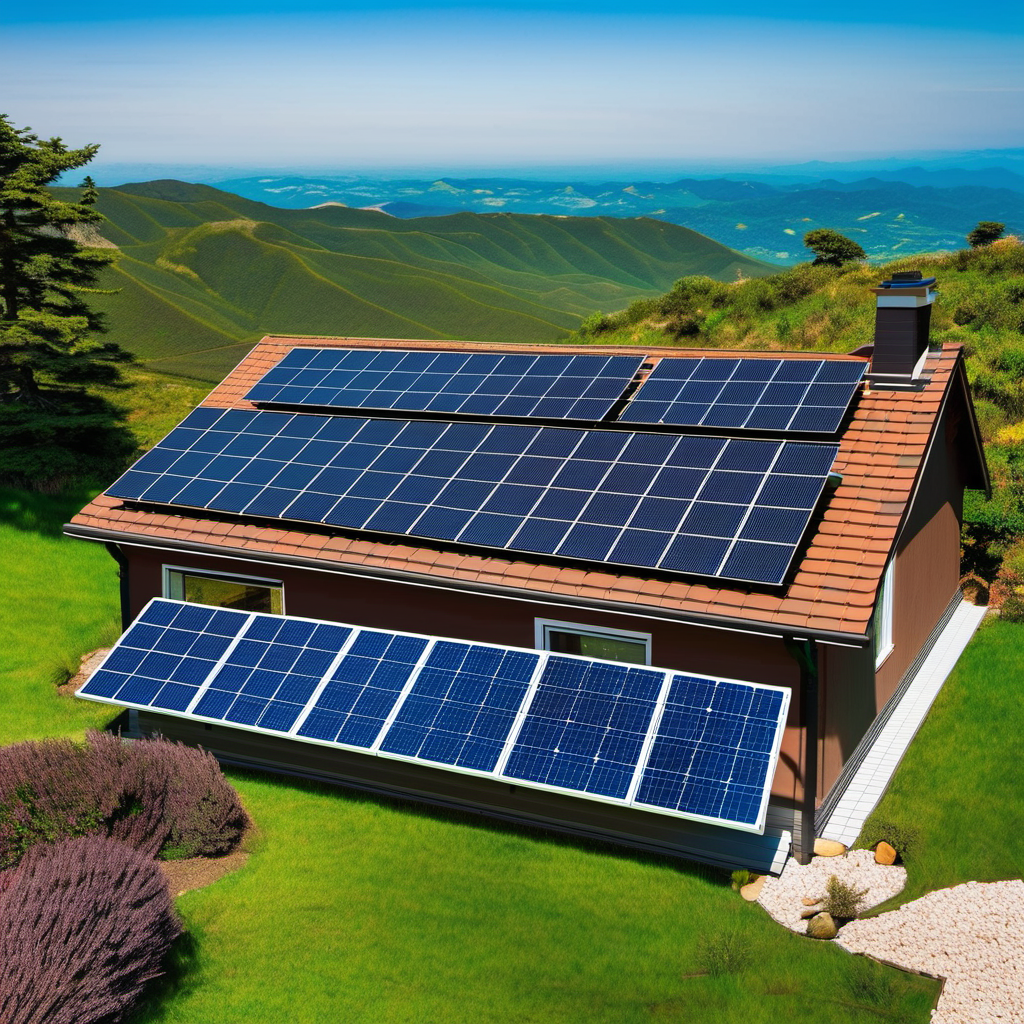
A hydroelectric turbine is a device that is used to convert the energy of flowing water into mechanical energy, and then the converted mechanical energy is used to generate electricity. Hydroelectric turbines are the most important component of hydroelectric power plants, which harness the kinetic and potential energy of water to produce electricity.
Table of Contents
Can Riverside Hydroelectric Turbine produce sufficient energy to supply?
Yes! Of course. A hydroelectric turbine can produce sufficient energy to supply.
Riverside hydraulic turbines are often used for small-scale, decentralized energy generation. They are commonly employed in micro-hydro systems that can provide power to remote or off-grid locations. In such cases, they can supply enough energy to meet the needs of a single home, a small community, or specific applications like irrigation or rural electrification.
The energy output of a riverside hydraulic turbine depends on several factors, including the flow rate of the river, the head (vertical drop), the size and efficiency of the turbine, and the duration of continuous flow. While riverside hydraulic turbines can be a viable source of energy, their capacity to supply sufficient energy varies greatly depending on the specific conditions of the river and the size of the turbine.
Here are some considerations for assessing the energy potential of riverside hydraulic turbines:
1. Flow Rate: The flow rate of the river is a critical factor. Higher flow rates typically yield more energy potential. Rivers with a consistent and substantial flow rate are better suited for energy generation.
2. Head: The vertical drop or head of the river (the difference in elevation between the intake and discharge points) influences the potential energy available. A higher head can lead to more significant energy generation.
3. Turbine Efficiency: The efficiency of the turbine used plays a crucial role. Modern, well-designed turbines are more efficient and can convert a higher percentage of the water’s kinetic energy into electricity.
4. Turbine Size: The size of the turbine should be appropriate for the flow rate and head of the river. Smaller rivers may require smaller turbines, while larger rivers can accommodate larger installations.
5. Duration of Flow: The availability of water throughout the year affects the energy output. Some rivers may experience seasonal variations in flow, which can impact energy generation.
6. Environmental Considerations: It’s essential to consider the environmental impact of installing a riverside hydraulic turbine. Depending on the location and local regulations, there may be restrictions on water diversion and ecosystem preservation.
How does a Hydroelectric Turbine system work?

A hydroelectric turbine works by harnessing the energy of flowing water and converting it into mechanical energy, which is then used to generate electricity. Here’s a step-by-step explanation of how a typical hydroelectric turbine operates:
1. Water Source: The process begins with a water source, typically a river, dam, or reservoir, that provides a consistent flow of water. The potential energy of the water is determined by its elevation, known as the “head,” which is the vertical distance between the water source and the turbine’s location.
2. Penstock: The flowing water is directed towards the hydroelectric turbine through a structure called a penstock. The penstock is a large, enclosed pipe or channel that guides the water from the source to the turbine. The water’s kinetic energy increases as it accelerates through the penstock due to gravity.
3. Turbine: Inside the hydroelectric power plant, the fast-flowing water from the penstock strikes the blades of a turbine. The turbine is designed to capture the kinetic energy of the water and convert it into rotational mechanical energy. The type of turbine used (e.g., Francis, Pelton, Kaplan) depends on the specific characteristics of the water flow, such as flow rate and head.
Francis Turbine: Suitable for medium-head conditions with moderate flow rates.
Pelton Turbine: Ideal for high-head, low-flow conditions
Kaplan Turbine: Designed for low-head, high-flow conditions
4. Rotation: As the water strikes the turbine blades, it causes the turbine to rotate. The mechanical energy generated by this rotation is then transferred to a shaft connected to a generator.
5. Generator: The rotating shaft of the turbine is connected to a generator. Inside the generator, the mechanical energy is converted into electrical energy through the process of electromagnetic induction. This involves the rotation of coils within a magnetic field, creating an alternating current (AC) electrical output.
6. Electricity Generation: The alternating current generated by the generator is typically in a high-voltage form. It goes through transformers to increase its voltage for efficient transmission over power lines. Subsequently, it can be distributed to homes, businesses, and industries for various electrical applications.
7. Control and Regulation: Hydroelectric power plants have control systems that can adjust the flow of water through the turbine to regulate power output. This is important for maintaining a stable electrical grid and meeting fluctuations in electricity demand.
8. Environmental Considerations: After passing through the turbine, the water is released downstream, often back into the river. The operation of hydroelectric power plants can have environmental impacts on river ecosystems and aquatic habitats, so various measures are often taken to minimize these effects.
How much it cost to build a Hydroelectric turbine system?
Hydroelectric turbine is the most environmental friendly energy-producing systems in recent times. It takes near about $1000 to $1500 to build a hydroelectric turbine system.

Advantages of using Hydroelectric turbine system
Hydroelectric turbines offer several advantages as a method of generating electricity:
- Renewable and Sustainable: Hydroelectric power relies on the natural water cycle, which is a renewable resource. As long as there is a consistent source of flowing water, such as a river or dam, hydroelectric power generation can be sustained indefinitely.
- Clean Energy: Hydroelectric power is one of the cleanest forms of energy generation. It produces minimal greenhouse gas emissions and air pollutants compared to fossil fuel-based power plants. This helps reduce air pollution and fight against climate change.
- Reliable and Consistent: Hydroelectric power plants can provide a stable and consistent source of electricity. Unlike some renewable sources like wind or solar, which are intermittent, hydroelectric power can operate continuously as long as there is a steady flow of water.
- Base Load Power: Hydroelectric power is often used for base load electricity generation, which means it can provide a constant and dependable supply of electricity, making it suitable for meeting the minimum energy demand.
- Energy Storage: Hydroelectric reservoirs can act as a form of energy storage. Excess electricity generated during periods of low demand can be used to pump water back into the reservoir, effectively storing energy for later use.
- Long Lifespan: Hydroelectric power plants and turbines have long lifespans, often exceeding 50 years or more, with proper maintenance. This longevity contributes to their economic viability and sustainability.
- Low Operating Costs: Once a hydroelectric power plant is constructed, its operating and maintenance costs are relatively low compared to fossil fuel power plants. The primary expenses are associated with maintenance and occasional upgrades.
- Low Fuel Costs: Unlike fossil fuel power plants that require ongoing fuel supply and costs, hydroelectric power plants rely solely on the water supply, which is generally free and abundant.
- Water Resource Management: Hydroelectric projects often involve the management of water resources, including flood control, irrigation, and water supply. This dual-use of water resources can provide additional societal benefits.
- Job Creation: The construction and operation of hydroelectric power plants create jobs in engineering, construction, and maintenance, benefiting local economies.
- Reduces Reliance on Fossil Fuels: By generating electricity from a renewable source, hydroelectric power reduces the dependence on fossil fuels, enhancing energy security and reducing exposure to fuel price fluctuations.
- Reservoir Recreation: Reservoirs created by hydroelectric dams can provide opportunities for recreational activities such as boating, fishing, and tourism.
Frequently Asked Questions (F.A.Q)
- What is a riverside hydroelectric turbine, and how does it work?
- A riverside hydroelectric turbine is a device that generates electricity by harnessing the energy of flowing water in a river. It typically consists of a turbine that spins when water flows over its blades, and this rotational energy is used to generate electricity through a connected generator.
- What are the key factors that determine the energy output of a riverside hydroelectric turbine?
- The energy output of a riverside hydroelectric turbine depends on factors such as the flow rate of the river, the vertical drop or head, the efficiency of the turbine, the size of the turbine, and the duration of continuous water flow.
- Can riverside hydroelectric turbines be used for off-grid or remote areas?
- Yes, riverside hydroelectric turbines are often used in off-grid or remote locations to provide electricity. They can be an excellent source of clean and sustainable energy for small communities, rural areas, or isolated properties that are not connected to the main power grid.
- What environmental considerations should be taken into account when installing a riverside hydroelectric turbine?
- Environmental impact assessments are crucial when installing such turbines. Factors to consider include potential effects on aquatic ecosystems, water quality, fish migration, and the local environment. Proper permitting and compliance with regulations are typically required.
- Are riverside hydroelectric turbines suitable for large-scale electricity generation?
- Riverside hydroelectric turbines are primarily used for small to medium-scale electricity generation. While they can provide sufficient energy for specific applications and small communities, larger-scale electricity generation often requires the conditions and infrastructure associated with larger hydropower plants, including dams and reservoirs.



































